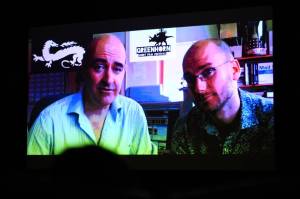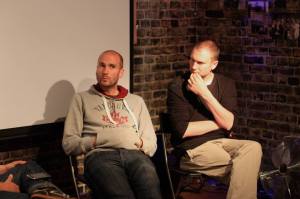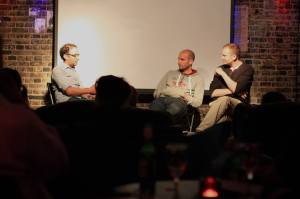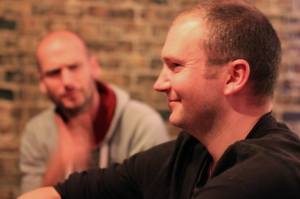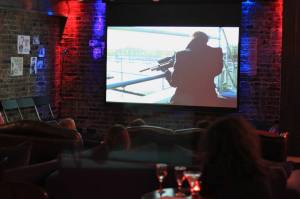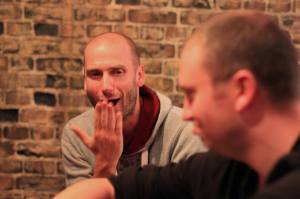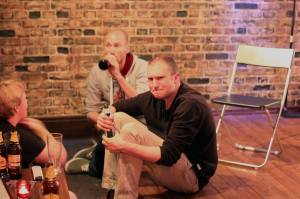Every lunchtime we tweet about the making of films and TV shows, with tasty videos and links…
Here’s a rundown of our March tweets;
- A look at the career of Billy Bitzer, silent master DW Griffith’s DoP… http://t.co/vrS7SX28Ti Mar 22, 2014
- Hear DoP Rob Hardy talk about embracing the muddy when shooting @cnoakley’s Physics… http://t.co/vBGN3DWcwU Mar 21, 2014
- Catch up with all our February #filmmaking & #screenwriting tweets… http://t.co/E1XJRpwQi2 #scriptchat Mar 20, 2014
- A profile of #CitizenKane’s deep focus pioneer, DoP Gregg Toland… http://t.co/YanOB4HhbB Mar 20, 2014
- .@InTheDocHouse profile documentary cinematographer Roger Chapman… http://t.co/nwh2oOEPTi Mar 19, 2014
- Cuaron’s DoP Emanuel Lubeszki talks cinematography in the digital age… http://t.co/AZ3t1e9u2P Mar 18, 2014
- Roger Deakins, the don of DoPs, gives his advice to his contemporaries… http://t.co/g0wEWZaTZL #filmmaking Mar 17, 2014
- Listen to our @britflicks podcast guest turn, and get the lowdown on @mrdavidluke’s epic Western short film… http://t.co/UAneFDSiF1 Mar 17, 2014
- Here’s a collection of our lunchtime film & TV craft tweets from February… http://t.co/xM4PZYDowO #filmmaking #scriptchat Mar 17, 2014
- Next week we’re tweeting about DoPs, including Roger Deakins, Peter Suschitzky, Roger Chapman, Rob Hardy and more… Mar 16, 2014
- WWII Week ends with the story of the making of #Casablanca… http://t.co/a9CS8GpUyn Mar 16, 2014
- I sing the praises of @FingercuffJIM & his filmmaking prowess as part of this @britflicks podcast… http://t.co/bnXMMhVx4n Mar 14, 2014
- Read about how #DancingInTheAshes told a WWII story in shortform… http://t.co/HEOJIQUFSN Mar 14, 2014
- The true story behind WWII character-study #TheCounterfeiters… http://t.co/hyReBbqprS Mar 13, 2014
- How Nazi Germany was goosestepped into the 1960s for the TV adaptation of #Fatherland… http://t.co/HXPAmT2ZWB Mar 12, 2014
- Spielberg talks about #SchindlersList background at length… http://t.co/ymVwpqfwwW #filmmaking Mar 11, 2014
- We tell @britflicks how @jonreidedwards got his dark period comedy made, and made well… http://t.co/TNTplTQrcC Mar 11, 2014
- The locations of #MarathonMan in NYC, then and now… http://t.co/6sWCP53si9 Mar 10, 2014
- Read our February ‘making of’ film & TV tweets… FYI fans of @MakingOfs http://t.co/4ynuAuiC9r Mar 10, 2014
- Next week we’re tweeting about WWII… Marathon Man, Schindler’s List, Fatherland, Counterfeiters, Casablanca and others… #scriptchat Mar 09, 2014
- Watching #TheBluesBrothers. The live-action version. Wish the whole thing could be done in Lego… http://t.co/JCVtu64UNq via @TheAVClub Mar 07, 2014
- A look at the design & building of the glorious stage puppets for #TheWarHorse via @TEDTalks… http://t.co/5aPFdhEQTe Mar 07, 2014
- Hear me say nice things in my best ‘Mr Bean’ voice about the films of @ollygood in this @britflicks podcast… http://t.co/OjwKzp77e3 Mar 06, 2014
- The true story from WW1’s trenches that inspired #JoyeuxNoel… via @telegraph http://t.co/a6sgnd48Wh Mar 06, 2014
- The first-rate #vfx from @pixomondo for little-seen German biopic #TheRedBaron… http://t.co/8KngGEnt6p Mar 05, 2014
- A look at the making of the first ever #Oscars’ Best Picture, 1927’s WW1 epic #Wings… http://t.co/njdC73XGJC Mar 04, 2014
- We throw out some love to our buddies @TPFilmClub, in this @britflicks podcast… http://t.co/kjUevzSmkc Mar 04, 2014
- Throwing out some @jonreidwards love in our guest turn on the @britflicks podcast w/ @Leytonrocks http://t.co/bnXMMhVx4n Mar 03, 2014
- A look back at the dense WW1 cautionary tale, Renoir’s masterful #LaGrandeIllusion… http://t.co/bUG0JEg2DI Mar 03, 2014
- Next week we’re tweeting about WW1. You’ve probably heard of it… Wings, Grande Illusion, Paths of Glory and others… #scriptchat Mar 02, 2014
- Catch our making-of tweets from last month; everything from #Roundhay to #Robocop… http://t.co/8uPOFbTPcJ Mar 01, 2014


